April 28, 2025 | 21:03 GMT +7
April 28, 2025 | 21:03 GMT +7
Hotline: 0913.378.918
April 28, 2025 | 21:03 GMT +7
Hotline: 0913.378.918
The Sustainable Development of One Million Hectares of High Quality and Low-Emission Rice Associated with Green Growth in the Mekong River Delta By 2030 Project is receiving attention from communities in promoting a green economy. How can the Project be implemented effectively? VAN News had an interview with Dr. Bui Ba Bong, Chairman of the Vietnam Rice Industry Association (VIETRISA).
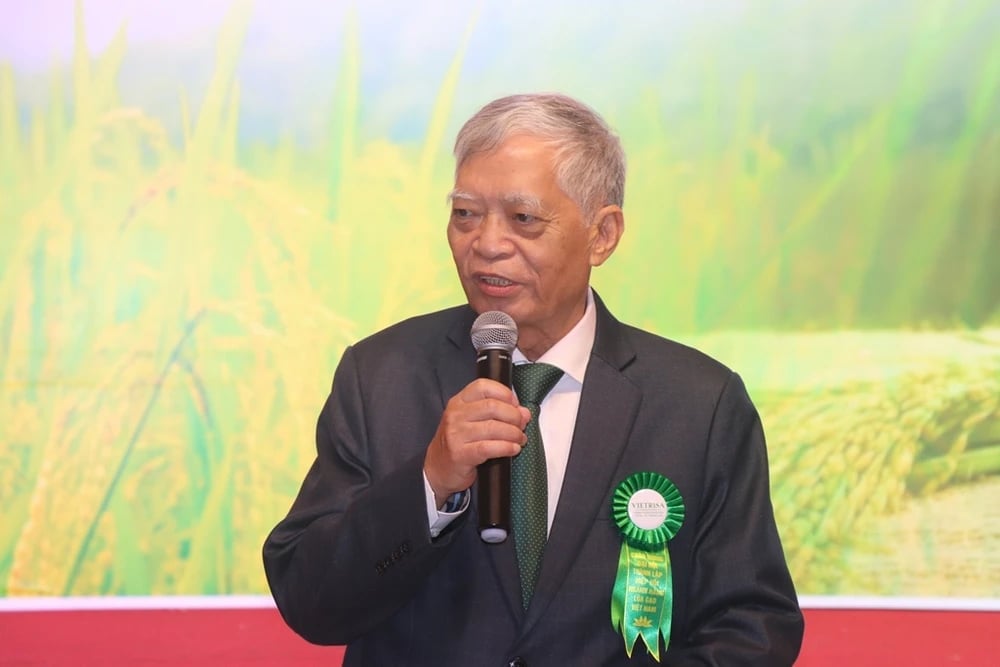
Dr. Bui Ba Bong, former Deputy Minister of Agriculture and Rural Development, Chairman of Vietnam Rice Industry Association. Photo: VIETRISA.
VAN News: Dear Dr. Bui Ba Bong, on April 5, 2024, the launching ceremony of the One Million Hectares of High Quality and Low-Emission Rice Project took place at Thuan Tien Cooperative, Thanh An Commune, Vinh Thanh District, Can Tho City. What were your first impressions?
Dr. Bui Ba Bong: First, in my opinion, the 1 million hectare rice project is not an entirely new story, but a step to build on the foundation of Vietnam's rice development over the past few years, with achievements that contribute to ensuring national food security, while also positioning Vietnam as the world's leading rice exporter.
Regarding the application of technical processes in rice production, we have made significant progress, especially in developing new rice varieties. Now, implementing the Project requires the integration and synchronization of technical advances, while developing and quickly applying new technologies in conditions of linkage between farmers in a production area (cooperatives) to promote the effectiveness of applying science and technology, as well as consuming products.
Next, choosing the Mekong Delta to implement the Project on a scale of 1 million hectares of rice is a suitable choice because this is the country's rice granary and one of the few deltas with the best ecological conditions for rice cultivation in the world. The results of the Project implementation will spread to other rice-growing regions.
VAN News: That is to say, the Project is not too ambitious?
Dr. Bui Ba Bong: In my opinion, the Project is not ambitious but clearly has the aspiration to increase income for rice farmers because, over the years, although rice farmers have significantly contributed, their income has been too low. The key solutions of the Project are all aimed at increasing farmers' income, such as reducing production costs, improving rice quality, and enhancing market linkages.
To achieve the project's goals, effective resource mobilization is crucial. The largest resource comes from farmers and enterprises, and the state needs to tap into this resource. It is necessary to promote the transformation of cooperatives into small businesses, in which farmers are closely linked to their responsibilities and interests. International support is valuable for upgrading infrastructure, including inland irrigation systems, field construction, storage facilities, and rice processing facilities.
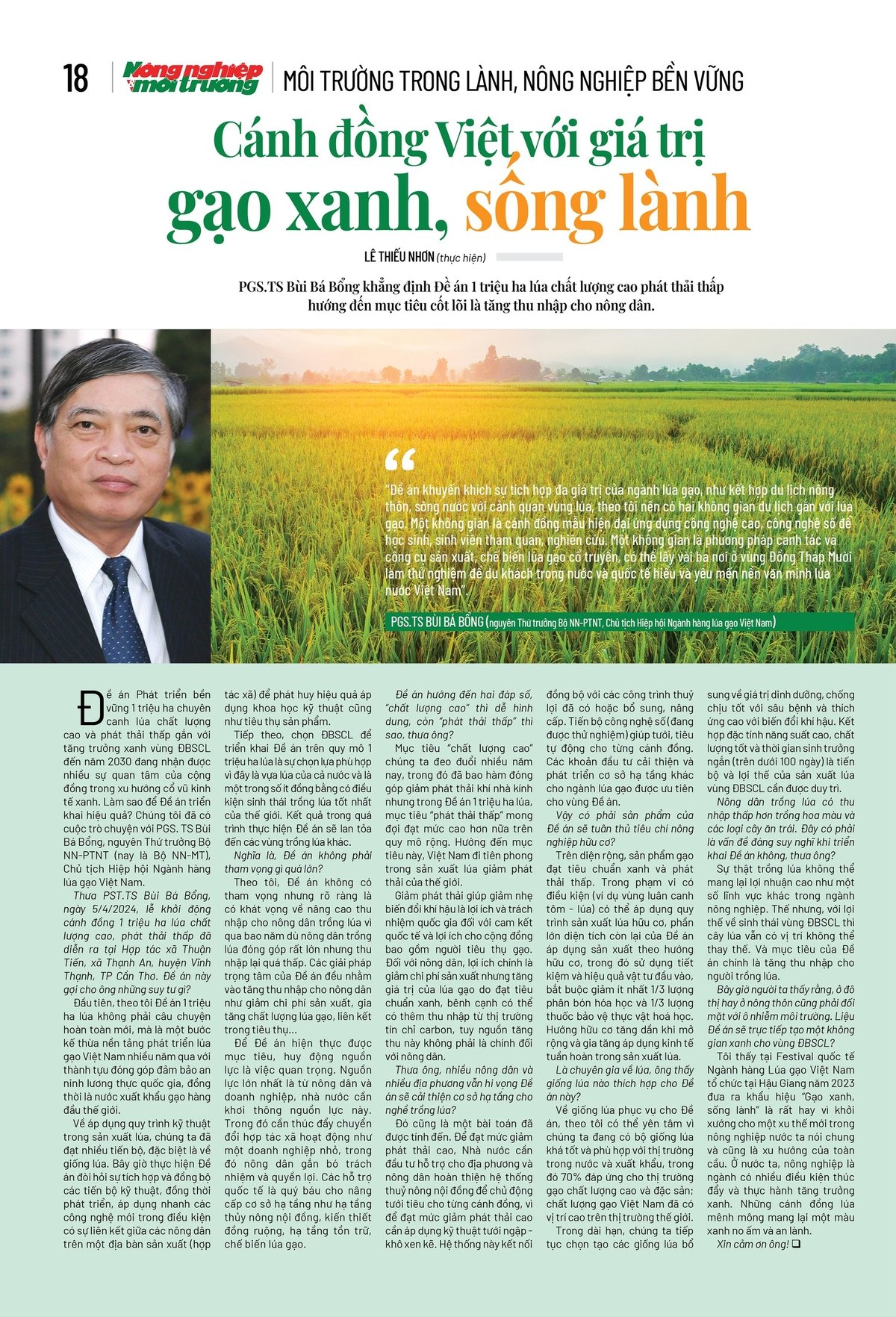
Interview with Dr. Bui Ba Bong, former Deputy Minister of Agriculture and Rural Development, Chairman of Vietnam Rice Industry Association, in the first issue of Vietnam Agriculture and Nature Newspaper.
VAN News: The project aims to address two key points: "high quality" is easy to imagine, but what about "low emissions," sir?
Dr. Bui Ba Bong: The “high quality” goal that we have been pursuing for many years has included contributions to reducing greenhouse gas emissions, but in the 1 million hectare rice project, the “low emission” goal is expected to be even higher on a large scale. Towards this goal, Vietnam is a pioneer in the world’s emission-reducing rice production.
Reducing emissions to mitigate climate change is in the national interest and a responsibility for fulfilling international commitments, benefiting the community, including rice consumers. For farmers, the main benefits are reduced production costs and increased rice value due to green standards, as well as the possibility of additional income from the carbon credit market. However, this source of additional income is not the primary source for farmers.
VAN News: Sir, many farmers and localities still hope that the Project will improve infrastructure for rice cultivation?
Dr. Bui Ba Bong: That is also a problem that has been taken into account. To achieve high emission reduction, the state needs to invest in supporting localities and farmers to complete their internal irrigation systems, enabling proactive irrigation of each field. This is necessary to apply the technique of alternating flooding and drying, which is crucial for achieving high emission reduction. This system is synchronously connected to existing or additional and upgraded irrigation works. Digital technology, currently being tested, helps automate the irrigation and drainage of each field. Investments in improving and developing other infrastructure for the rice industry are prioritized for the Project area.
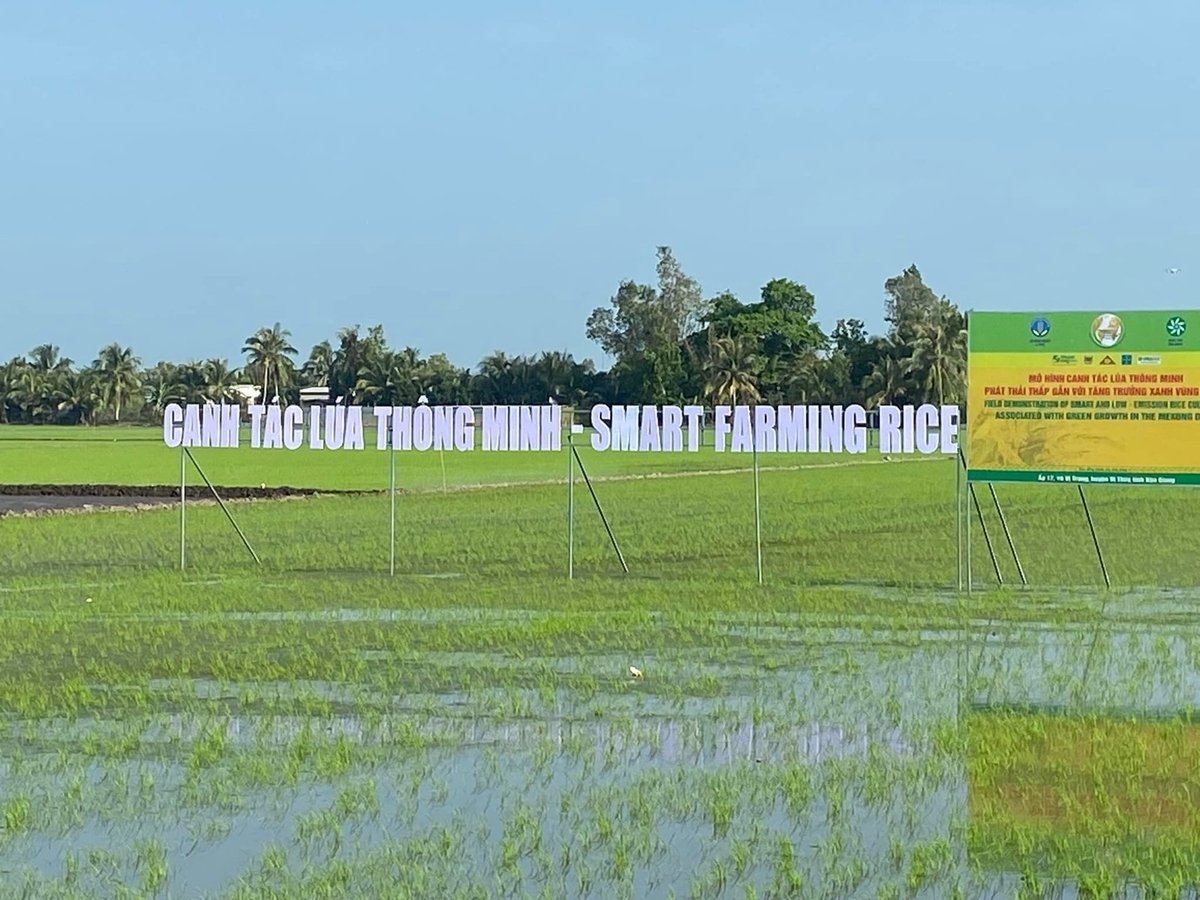
Smart rice farming model in Hau Giang.
VAN News: So will the products of the Project comply with organic agriculture criteria?
Dr. Bui Ba Bong: On a large scale, rice products meet green and low-emission standards. Within the scope of conditions (for example, shrimp-rice rotation areas), organic rice production processes can be applied. Most of the remaining areas of the Project apply organic production, in which input materials are used economically and effectively. It is mandatory to reduce at least one-third of chemical fertilizers and one-third of chemical pesticides. The organic direction gradually increases when expanding and increasing the application of the circular economy in rice production.
VAN News: Many places already have high-quality rice products; for example, they are cultivating ST25. Will they be interested in the Project, sir?
Dr. Bui Ba Bong: If areas growing specialty varieties such as ST25 apply the production process and criteria of Project 1, the value of rice products will increase. In addition to the enterprise's brand, the presence of a green rice certification label will increase the value of rice and enhance the brand image of the enterprise. The Vietnam Rice Industry Association is building a certification label "Vietnamese Green Rice with Low Emissions" to grant to cooperatives and enterprises in need.
VAN News: As a rice expert, which rice varieties do you think are suitable for this Project?
Dr. Bui Ba Bong: Regarding rice varieties for the Project, I believe we can be confident because we have a reasonably good set of rice varieties suitable for both domestic and export markets, of which 70% meet the high-quality and specialty rice market requirements. The quality of Vietnamese rice is in a high position in the world market.
In the long term, we continue to select and develop rice varieties that are nutritionally superior, resistant to pests and diseases, and highly adaptable to climate change. The combination of high yield, good quality, and a short growth period (approximately 100 days) is a key progress and advantage of rice production in the Mekong Delta that needs to be maintained.
VAN News: Rice farmers have lower income than those growing other crops and fruit trees. Is this an issue worth considering when implementing the Project, sir?
Dr. Bui Ba Bong: The truth is that rice cultivation cannot bring high profits like some other fields in the agricultural sector. However, with the ecological advantages of the Mekong Delta, rice still has an irreplaceable position. And the goal of the Project is to increase income for rice growers.
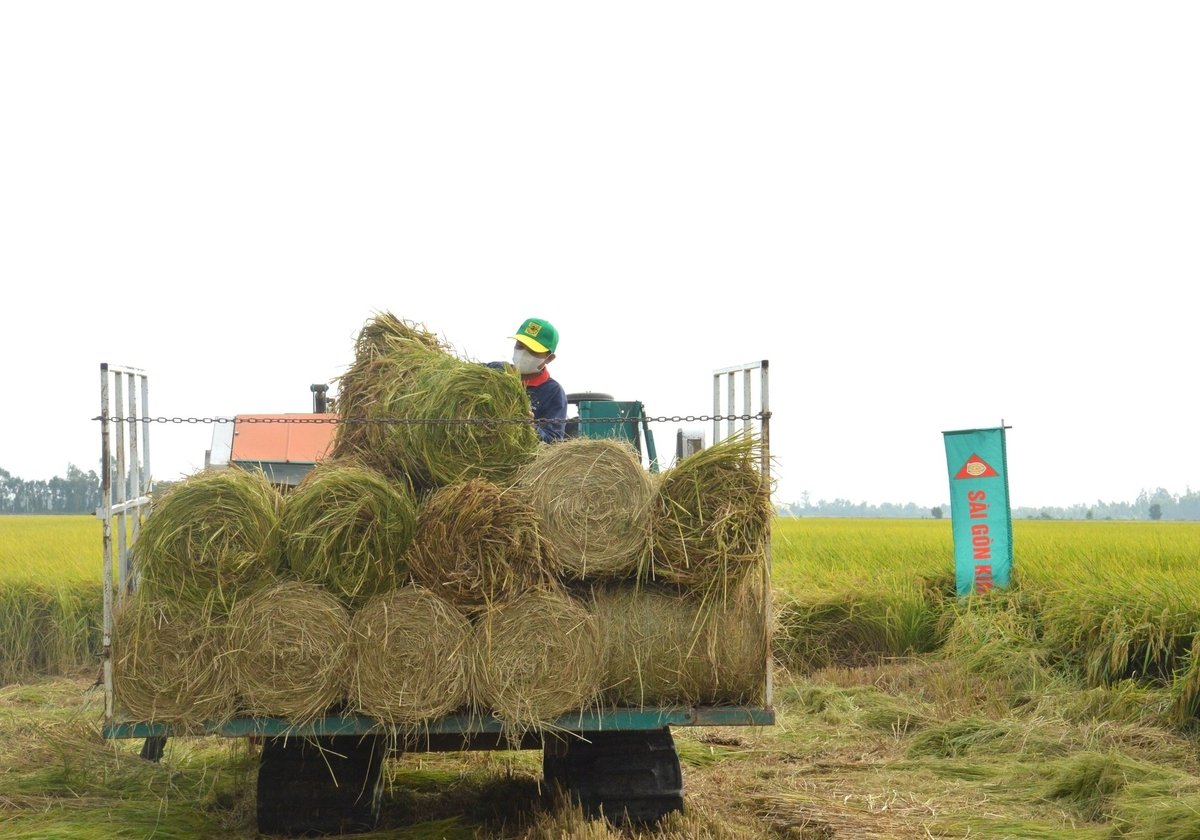
Collecting straw from the fields to increase farmers' income and reduce field burning.
VAN News: As Chairman of the Vietnam Rice Industry Association, what recommendations do you have to increase income for rice farmers?
Dr. Bui Ba Bong: Linkage is the most important factor in the rice value chain, where the beginning must involve a linkage between farmers within an organization, such as a cooperative. Linkage is a condition that reduces production costs, and only when farmers form an organization can they effectively link with businesses in the value chain. Requiring businesses to establish raw material areas or sign contracts for consumption (production under contracts) when farmers lack actual linkages demonstrates that it is challenging to implement and expand.
VAN News: Now people see that, in urban or rural areas, we have to face environmental pollution. Will the Project directly create a green space for the Mekong Delta?
I think the slogan "Green rice, healthy life" at the Vietnam Rice International Festival held in Hau Giang in 2023 is very effective because it initiates a new trend in our country's agriculture in general and also represents a global trend. In our country, agriculture is an industry with numerous conditions that promote and facilitate green growth. The vast rice fields bring a green color of prosperity and peace.
"The project encourages the integration of multiple values of the rice industry, such as combining rural and river tourism with rice landscapes. In my opinion, there should be two tourism spaces associated with rice. One place is a modern model field applying high technology and digital technology for students to visit and study. One place is the traditional rice cultivation method and production and processing tools. A few places in Dong Thap Muoi can be used as experiments so that domestic and international tourists can understand and love Vietnam's rice civilization."
VAN News: Thank you!
Translated by Quynh Chi
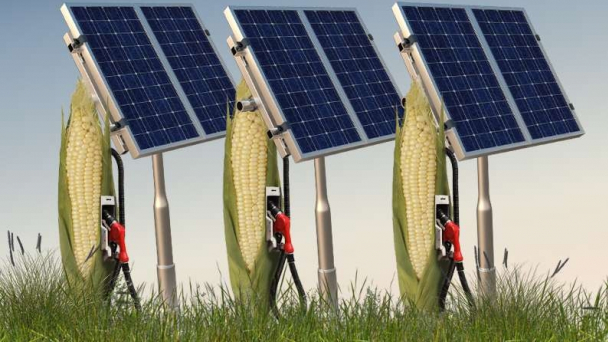
(VAN) In fact, it would require about 31 hectares of corn ethanol to produce the same amount of energy generated by one hectare of land covered in solar panels.
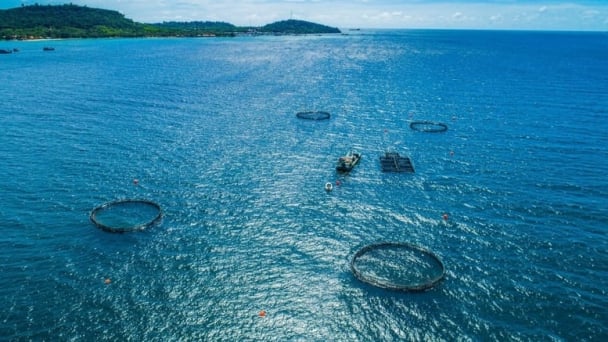
(VAN) Vietnam aims to effectively implement marine biodiversity conservation initiatives and the Fisheries Strategy, thereby improving the livelihoods of coastal communities and fishermen.
/2025/04/24/4049-1-203511_87.jpg)
(VAN) The Ministry of Finance continues to research and propose an effective, feasible plan for organizing, developing, and launching a carbon credit exchange in Vietnam.
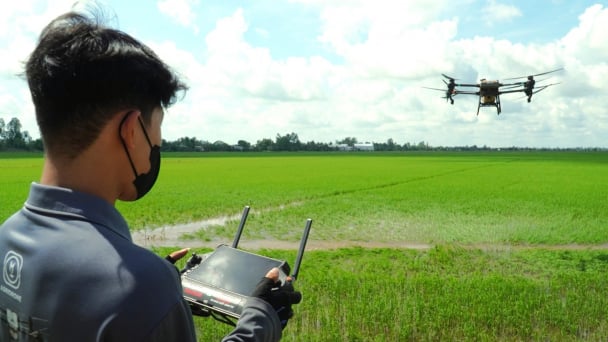
(VAN) Innovation is regarded as a critical solution for the promotion of sustainable, rapid development, which is intended to lead to a green economy.
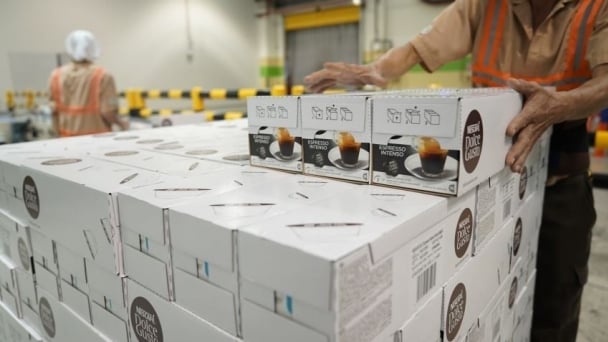
(VAN) Mr. Binu Jacob, General Director of Nestlé Vietnam, believes that circular economy is an essential step not only for businesses but also for the whole society's sustainable development.
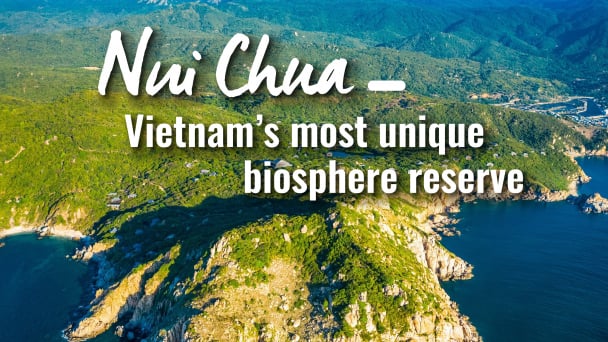
(VAN) Nui Chua Biosphere Reserve was recognised by UNESCO’s International Coordinating Council of the Man and the Biosphere Programme in December 2021 and is one of the 11 world biosphere reserves located in Vietnam.